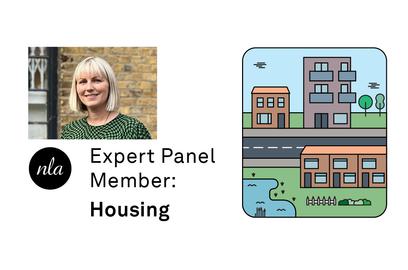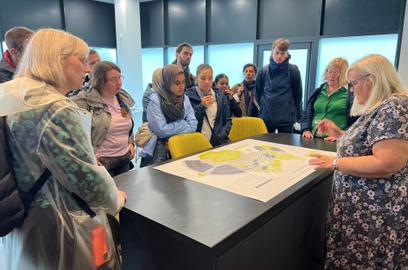Improving how we measure carbon in planning – a view from Lizzie Le Mare

Earlier this week I took part in an NLA think tank on innovative housing solutions for London. It was inspiring to be sat around the table with industry leaders who jointly are responsible for the design and delivery of much of our housing in London.
We were kept on track by Claire Bennie and tasked with being positive and forward thinking rather than getting stuck with the problems with the current system.
We particularly focused on affordability and the climate crisis, two of the biggest issues facing London’s homes. The session got me thinking about carbon and the way it is monetised in the planning system through carbon offsetting. Whilst better than nothing there are issues with this approach - it is a static measurement taken at a point in time. Carbon offsets rely on an agreed cost per tonne of carbon that often doesn’t reflect the true cost of sequestering that carbon.
Paying the offsetting contribution is often a cheaper option than trying to save the equivalent amount of carbon on-site through design and technology measures. It also doesn’t relate to how people end up using the building once constructed or encourage developers to keep thinking about carbon reduction once planning is granted.
There is often 3-5 years between when a building is designed and when it is in occupation, a huge amount can change in that time.
Maybe we should approach carbon in the same way we approach viability and not only think about it at one point in time. Review mechanisms attached to planning consents mean that viability is is no longer a static assessment but gets updated over time.
What if we treated carbon offsetting in the same way to encourage constant improvement? A carbon review mechanism attached to a planning consent could encourage developers to continue to drive carbon savings through efficiency measures and the use of new technology on site as it emerges. There is often 3-5 years between when a building is designed and when it is in occupation, a huge amount can change in that time.
Regular reviews of in-use carbon with good incentives for improvement would encourage developers to be innovative in their approaches to sustainability. Real life, in occupation carbon measurement would incentivise end user education and the proper use of technology. This system could also allow for the true cost of carbon to be updated to reflect accurate costs for offsetting projects, rather than the cost per tonne being out of date before construction has even taken place.
Topics:
Related Updates

Lizzie Le Mare speaking at the Housing Finance Conference 2025

Tibbalds

Lizzie Le Mare joins NLA Expert Panel

Tibbalds
Stay In Touch
Sign up to our Newsletter
Subscribe to our newsletter to receive updates about making people friendly places.


